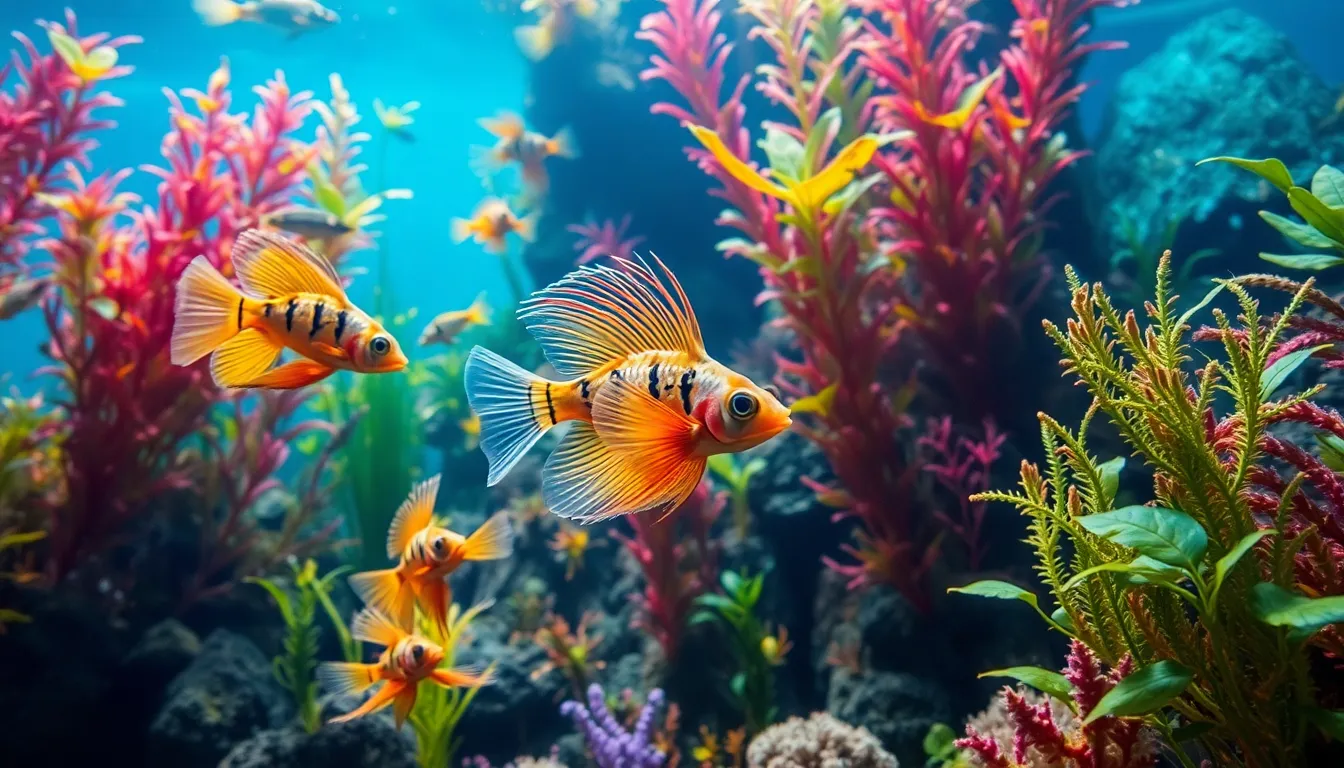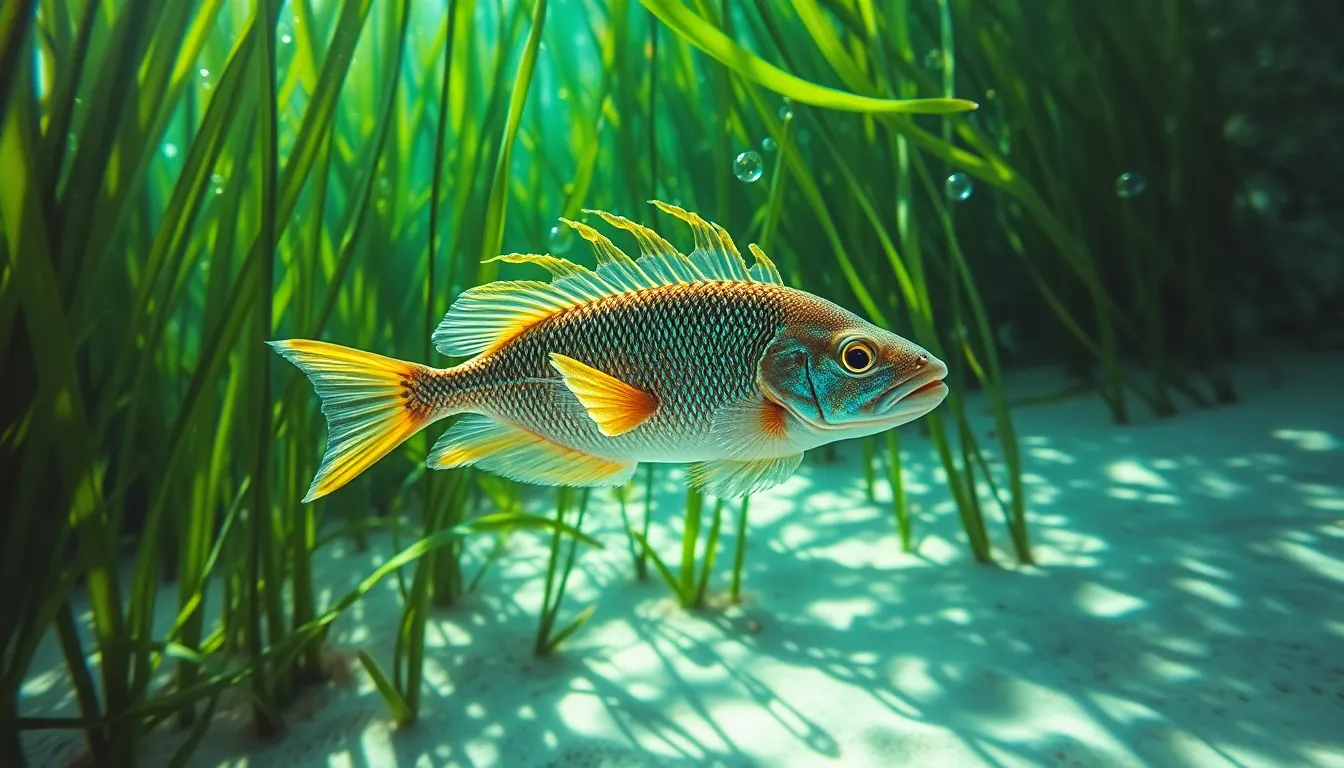Imagine a world where plants and fish unite in a spectacularly quirky way. Enter plantifishitus, the phenomenon that’s got nature enthusiasts and skeptics alike scratching their heads. This fascinating blend of botany and aquatic life isn’t just a conversation starter; it’s a testament to the wonders of evolution and adaptation.
Table of Contents
ToggleOverview of Plantifishitus
Plantifishitus represents a fascinating intersection of botanical and aquatic life, showcasing adaptations that intrigue scientists and nature enthusiasts. This unique phenomenon exhibits characteristics typical of both plants and fish, blurring the lines between these distinct groups. Researchers note that its development illustrates nature’s capacity for innovation and resilience.
Species exhibiting plantifishitus often thrive in environments where water and soil intermix, leading to hybrid traits. One such example includes the Seagrass Fish, which demonstrates how certain plant features enable better survival in underwater ecosystems. Observations confirm that these species utilize photosynthesis, like plants, while also exhibiting mobility typical of fish.
Unique adaptations contribute significantly to their ecological success. For example, specialized structures allow for gas exchange similar to gills, while leaf-like appendages enhance buoyancy. These adaptations often increase access to sunlight and nutrients, fostering growth in challenging habitats.
Interactions during reproduction exhibit yet another layer of complexity. Some hybrids show signs of relying on current patterns for dispersal, mimicking traditional fish behaviors. Such intricate strategies reinforce the idea that plantifishitus represents a transitional stage in evolution, prompting further exploration of biodiversity.
Sustainability of habitats housing plantifishitus remains crucial for conservation efforts. Protecting these environments ensures that both fish and plant species can coexist and thrive. The exploration of this phenomenon continues to unveil important insights into ecological balance and evolution. Such discoveries spark excitement within the scientific community, highlighting how interconnected the natural world truly is.
Symptoms and Diagnosis

Plantifishitus presents several distinctive symptoms. Identifying these signs aids in early detection and understanding of the phenomenon.
Common Symptoms
Symptoms include unusual growth patterns. Many species display hybrid characteristics like leaf-like appendages and fish-like mobility. In addition, changes in coloration often occur, with vibrant hues attracting attention. Affected organisms may also experience altered buoyancy, impacting how they navigate their environments. Observers frequently note these unique features, linking them to the presence of plantifishitus. Increased photosynthetic activity further signals this phenomenon, promoting unusual life cycles.
Diagnostic Methods
Diagnosing plantifishitus involves multiple methods. Visual observation remains crucial, allowing experts to identify specific traits and behaviors. Laboratory analyses can confirm the presence of genetic markers indicative of hybrid traits. Environmental assessments contribute to understanding habitat influences on affected species. Microscopic examinations may reveal cellular adaptations that characterize plantifishitus. Genetic profiling provides additional insights, clarifying the evolutionary relationships of these hybrid organisms. Collectively, these methods enhance knowledge and facilitate the study of this intriguing phenomenon.
Causes and Risk Factors
Understanding the causes and risk factors of plantifishitus reveals critical insights into its existence. Two primary categories influence this phenomenon: environmental influences and genetic predispositions.
Environmental Influences
Water quality plays a significant role in the development of plantifishitus. Pollution and nutrient levels affect hybrid traits in species. Temperature variations also impact growth patterns. Certain environments, like coastal areas where aquatic and terrestrial ecosystems converge, foster the development of unique adaptations. Moreover, light availability dictates photosynthetic efficiency, influencing survival rates. Researchers note that disturbances in habitat can lead to increased hybridization, reflecting nature’s adaptability to changing conditions.
Genetic Predispositions
Genetic traits significantly contribute to the occurrence of plantifishitus. Inherited characteristics determine the likelihood of hybridization between plants and fish. Specific genes may enable photosynthetic abilities in certain fish. Additionally, chromosomal arrangements can foster hybrid vigor, allowing organisms to better adapt to their surroundings. Studies show that selective pressures, including competition and predation, influence genetic variation. This complexity underscores the interplay between genetic makeup and environmental factors in shaping the phenomenon.
Treatment Options
Various treatment options exist for addressing plantifishitus, focusing on medical interventions and lifestyle modifications. These approaches aim to manage symptoms and enhance ecological resilience.
Medical Treatments
Medicinal solutions primarily target the unique hybrid characteristics of plantifishitus. Specialized phytochemicals can promote the healthy growth of these organisms while balancing hybrid traits. Nutrient supplements provide essential minerals, enhancing photosynthetic efficiency. Environmental treatments may involve adjusting water conditions such as pH levels and salinity, optimizing the hybrid’s habitat. Laboratory interventions often assess genetic markers to inform tailored treatments.
Lifestyle Modifications
Altering environmental conditions benefits organisms exhibiting plantifishitus. Implementing measures like improving water filtration and reducing pollution fosters a healthier ecosystem. Increased sunlight access through strategic planting promotes photosynthesis. Cultivating non-invasive plant species nearby supports hybridization without overpowering native traits. Regular monitoring of water quality and temperature ensures optimal growth conditions for these unique entities. Adopting sustainable practices contributes to long-term resilience in areas housing plantifishitus.
Preventive Measures
Regular monitoring of environmental conditions maintains the health of ecosystems housing plantifishitus. Improved water quality directly impacts the survival of species adapting to hybrid traits. Implementing effective filtration systems reduces contaminants that hinder growth and development.
Ensuring proper light availability is essential for photosynthesis, which enhances overall vitality. Utilizing natural sunlight whenever possible promotes sustainable growth among plantifishitus species. Establishing protective buffer zones around coastal areas minimizes pollution and encourages thriving habitats.
Educating communities about the significance of plantifishitus fosters appreciation and encourages conservation efforts. Organizing workshops provides valuable insights on the interaction between aquatic and terrestrial ecosystems. Developing community-led initiatives enables local stakeholders to engage in habitat restoration.
Additionally, promoting sustainable agricultural practices decreases runoff that leads to water pollution. Utilizing organic farming methods supports healthier soil and reduces harmful chemicals that adversely affect aquatic life. Responsible land use planning protects critical habitats vital for preservation.
Joining forces with conservation organizations strengthens efforts toward safeguarding ecosystems integral to plantifishitus. Participating in monitoring programs contributes to long-term research and understanding of biodiversity. Engaging in citizen science projects encourages public involvement in tracking changes within local environments.
Each of these preventive measures reinforces the resilience of plantifishitus habitats, promoting ecological balance. Prioritizing their implementation creates a foundation for sustainable coexistence between fish and plant species.
Understanding plantifishitus opens a window into the remarkable interplay between aquatic life and plant ecosystems. This unique phenomenon not only highlights the adaptability of species but also underscores the importance of preserving their habitats. As research continues to reveal the intricacies of plantifishitus, it becomes evident that fostering ecological balance is vital for both fish and plant species. By prioritizing conservation efforts and engaging communities in sustainable practices, the resilience of these habitats can be enhanced. The future of plantifishitus depends on collective action and awareness, ensuring that these fascinating organisms thrive in harmony with their environments.



